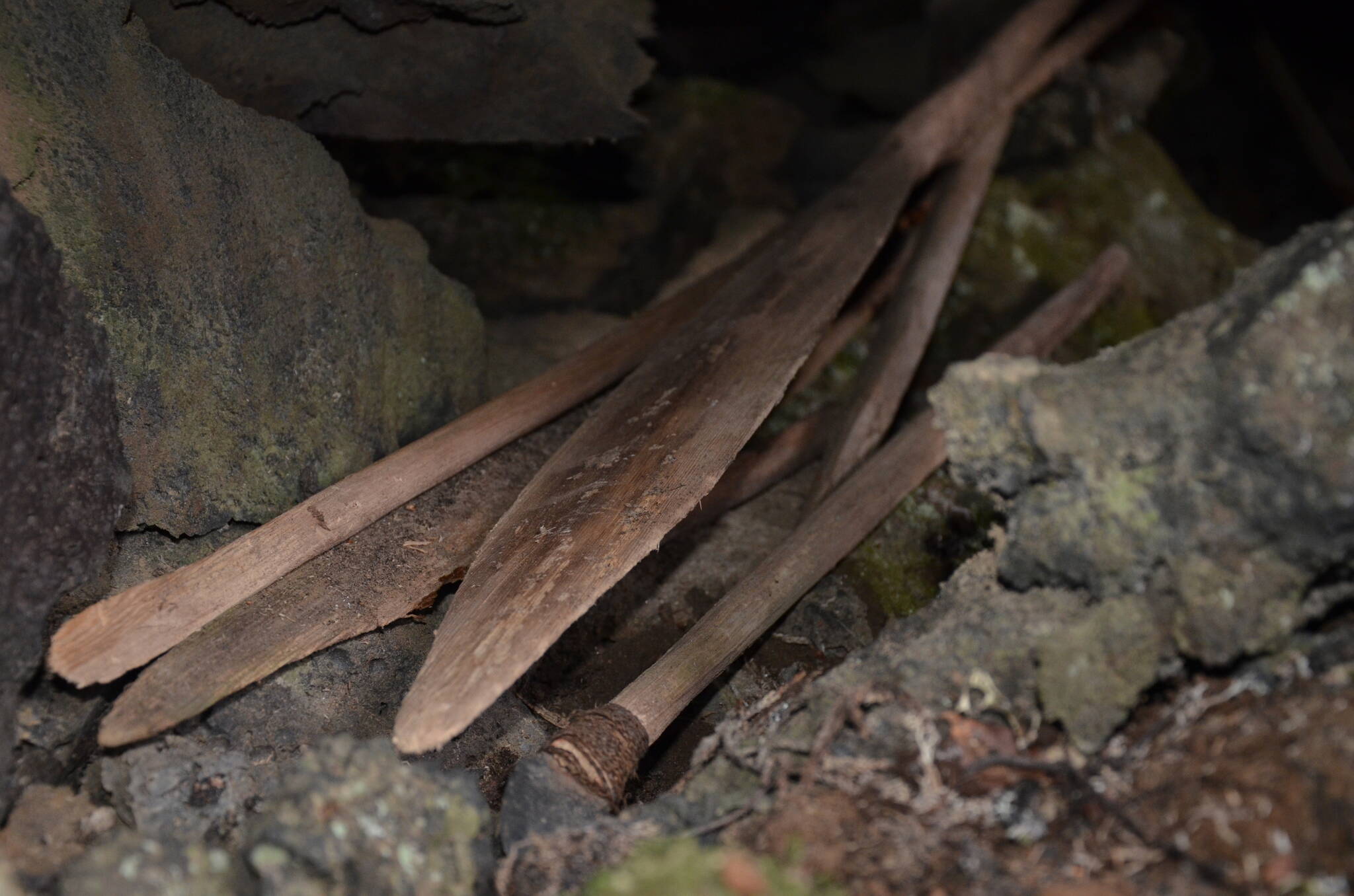Ben Jones suspected he had found something special when he squeezed into a volcanic cave and saw pale wooden poles, some with ends shaped like a willow leaf.
When he crawled in farther, he found a cache of items — several paddles and a spear with a stone tip that was still attached. He suspected that the last hands to touch those paddles belonged to people who were no longer alive.
Jones, a permafrost and northern-phenomena researcher, then backed out of the hole, which had been formed by cooling lava a few thousand years earlier.
He sat down on a rock, looked out at Imuruk Lake on Alaska’s Seward Peninsula and took a few breaths.
“How cool,” he thought.
After a few more heartbeats, he rushed to find his friend and fellow researcher Guido Grosse, there with Jones to study permafrost in Bering Land Bridge National Park and Preserve. He led Grosse back to the find.
The pair then shared their photos at Imuruk Lake with their waiting floatplane pilot Jim Webster of Fairbanks. Webster agreed they had found something remarkable.
It was summer 2010. Jones, now with the University of Alaska Fairbanks Institute of Northern Engineering, was then with the U.S. Geological Survey on a NASA grant to study permafrost in Siberia and Alaska.
Grosse, still a researcher with the Alfred Wegner Institute in Germany, was Jones’s graduate advisor at the time. The pair are coauthors on a recent paper about the find in the Alaska Journal of Anthropology.
Grosse and Jones finished their 2010 field trip when Webster flew them to Fairbanks in his floatplane. Right away, Jones contacted Bob Gal and Jeanne Schaff with the National Park Service to share photos of what he had found, as well as the GPS coordinates.
Gal and Schaff — who did her PhD dissertation on late-prehistoric Inupiaq societies of the Seward Peninsula — tried to find the same cave later that summer. But the Lost Jim Lava Flow in which it is located is wrinkled and folded, spilling for miles over the interior of the Seward Peninsula.
Jones and Grosse were back in the area doing more studies in 2011 (Webster was again their pilot). When they finished, Jones marked the cave by pinning down several white trash bags in the shape of an X, which enabled Gal and Schaff to later find it and retrieve the items.
Schaff, Jones, and UAF’s Ben Gaglioti carbon-dated the wood and a thread of caribou sinew used to attach a stone tip to a spear. They found the most likely time that wood had grown and that caribou was alive was the mid 1600s or 1700s.
Archaeologist Jeff Rasic of the National Park Service in Fairbanks helped create a display in Nome featuring the items, which were probably part of a hunter’s cache at the time when English migrants were first settling the east coast of the U.S.
“The owners of these tools were intimately familiar with the landscape and the seasonal movement of animals,” Rasic wrote. “A common and reoccurring hunting tactic involved a group of hunters cleverly exploiting the juxtaposition of the lava field and Imuruk Lake.
“While one group of hunters steered caribou towards water, an easy feat since (the caribou) preferred to avoid the treacherous lava field, a second group waited in kayaks ready to seize the panicked animal.”
The Lost Jim Lava Flow oozed over the landscape less than 2,000 years ago. The 60-square-mile deposit of jagged rocks got its name in 1947 after a member of the Geological Survey party named Jim became separated from his team there for most of a day.
Rasic said Jones’ find is remarkable for several reasons.
“It’s really rare to find such good organic preservation, and whole, functional tools,” he said. “Normally, archaeologists find only useless things that were worn out or broken.”
Jones remembers finding the paddles and spears fondly because a discovery moment like that just doesn’t happen for most people.
The discovery is also one of the many warm memories he shared with pilot Jim Webster of Webster’s Flying Service in Fairbanks. In 2020, Jones was a passenger in Webster’s plane when the plane crashed in northern Alaska. Jones survived but Webster passed away.
“(Jim) loved that find out there, among our many adventures over the years,” Jones said.
• Since the late 1970s, the University of Alaska Fairbanks’ Geophysical Institute has provided this column free in cooperation with the UAF research community. Ned Rozell ned.rozell@alaska.edu is a science writer for the Geophysical Institute.

